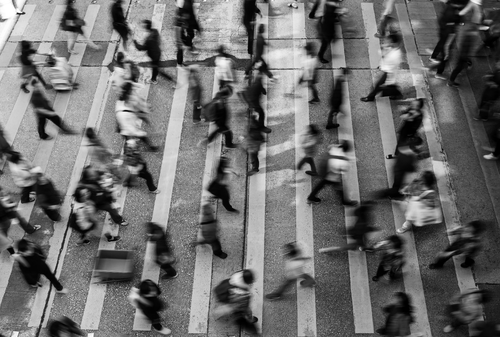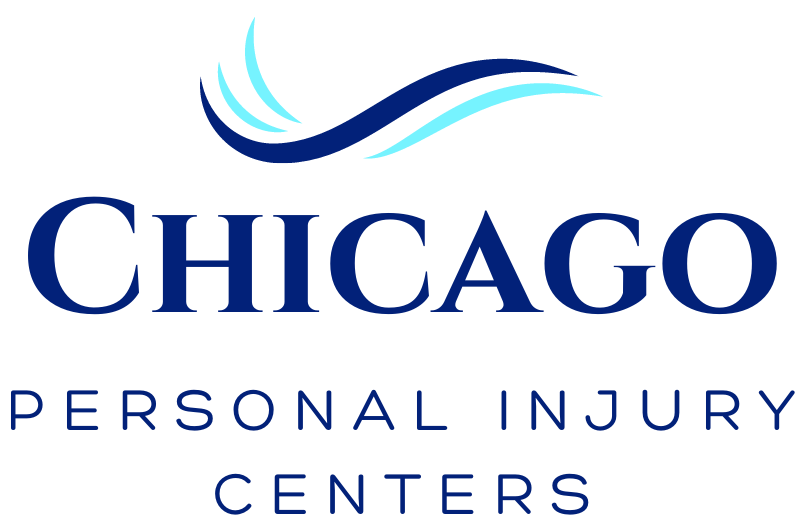Pedestrian accidents are a harsh truth on Chicago’s crowded streets, leaving those involved forever changed. The toll these incidents take is not lost on us at Chicago Personal Injury Centers. We’re committed to restoring the lives of victims through a comprehensive approach to care.
The immediate aftermath of a pedestrian accident can leave one disoriented. But identifying potential injuries quickly is paramount. By understanding these injuries, not only can treatment begin, but it empowers individuals to reclaim their lives. Let’s explore these injuries, and the treatment options available.
Types of Head Injuries
Head injuries are a common result when pedestrians are struck by vehicles. These injuries vary greatly—from mild concussions to severe traumatic brain injuries (TBIs) and skull fractures.
Concussions happen when the brain is violently jolted within the skull. TBIs, however, are a broader category, including bruises and blood clots. These can lead to lasting problems with thinking, memory, and movement. Skull fractures are breaks or cracks in the skull, opening the door for infection and further brain damage.
Symptoms
The signs and symptoms of head injuries can vary depending on the type and severity. However, some common indicators include:
- Changes in mood or behavior
- Sensitivity to light or sound
- Headaches (often persistent or worsening)
- Difficulty concentrating
- Memory problems
- Loss of consciousness (brief or prolonged)
- Nausea and vomiting
- Confusion or disorientation
- Dizziness or vertigo
- Blurred vision
Diagnosis
We use a variety of methods to assess head injuries. Physical exams, neurological assessments, and imaging scans like CTs and MRIs are all part of the toolkit. These scans allow us to visualize the brain and skull, pinpoint fractures, and rule out other conditions that might be causing the symptoms.
Treatment Options
Treating head injuries requires a tailored approach based on the specific type and severity. Mild concussions typically need rest, observation, and over-the-counter pain meds. Severe TBIs or skull fractures might mean a hospital stay, medication for swelling and seizure prevention, physical therapy to regain movement, and sometimes surgery to fix fractures or remove blood clots.
Types of Spinal Injuries
The impact of spinal injuries from pedestrian accidents can be devastating. They affect not only mobility and sensation, but also overall quality of life. These injuries can range from relatively minor—like herniated discs, where the cushions between vertebrae rupture and put pressure on nerves—to much more severe.
This includes spinal fractures and, most severe of all, spinal cord injuries. The latter can result in partial or complete paralysis below the point of injury.
Symptoms
The symptoms of spinal injuries vary depending on the location and severity of the damage. Common signs and symptoms include:
- Changes in bowel or bladder function
- Loss of sensation
- Back pain (acute or chronic)
- Numbness or tingling in the extremities
- Difficulty walking or balancing
- Neck pain or stiffness
- Paralysis (partial or complete)
- Muscle weakness or spasms
Diagnosis
To figure out if there’s a spinal injury, we do a thorough exam. This usually involves a physical check-up, looking at medical history, and using imaging tests. X-rays can show fractures or misalignment of the vertebrae. MRIs give detailed images of the spinal cord, nerves, and soft tissues, helping to identify problems like herniated discs.
CT scans might also be used to look at bone damage or find anything pressing on the spinal cord.
Treatment Options
Treatment depends on the specific type and how bad the damage is. For less severe cases, like a herniated disc with minimal nerve compression, physical therapy, pain meds, and chiropractic care might be enough.
More severe cases, like spinal fractures or spinal cord injuries, often need surgery to stabilize the spine, take pressure off nerves, and stop things from getting worse. In some situations, ongoing rehab and assistive devices may be needed to help the person regain as much function and independence as possible.
Common Fractures and Broken Bones
Pedestrian accidents often lead to broken bones because of the impact. The long leg bones, like the femur (thighbone), tibia (shinbone), and fibula (calf bone), are especially vulnerable. The arms—humerus (upper arm bone), radius and ulna (forearm bones), and the small bones in the hands and wrists—can also break.
Rib fractures happen from the force of impact on the chest. This can cause pain, trouble breathing, and sometimes damage to internal organs. Pelvic fractures, however, are serious and involve multiple breaks, needing a lot of treatment and rehab.
Symptoms
The signs and symptoms of fractures and broken bones are usually quite apparent. These may include:
- Swelling and bruising around the injured area
- Severe pain at the fracture site, worse with movement
- A grinding or crackling sound or feeling
- Can’t move the injured limb or put weight on it
- The affected limb looks misshapen or out of place
Diagnosis
We determine if there’s a fracture by examining the injured area and using imaging tests. We’ll check for tenderness, swelling, deformity, and crepitus (that’s the grinding sound or feeling). X-rays are the go-to tool because they give clear pictures of the bones and show exactly where and how bad the break is.
Treatment Options
Treatment depends on the type of break, where it is, and how bad it is. It might include casting or splinting to keep the bone still, so it heals properly. Sometimes, surgery is needed to put the pieces back together, stabilize the fracture with pins or plates, or replace a damaged joint.
Pain meds can help, and physical therapy is often recommended after the bone heals to regain strength and movement. It’s really important to get medical help right away if you think you have a fracture. Quick diagnosis and the right treatment are key for proper healing and avoiding problems.
Types of Soft Tissue Injuries
It’s easy to focus on broken bones after a pedestrian accident, but soft tissue injuries are just as common and can be really painful. These injuries affect the muscles, tendons, ligaments—all of which hold your body together and let you move.
Some of the most common ones are sprains, which happen when ligaments (the tough tissue connecting bones) stretch or tear. Ankle sprains are a classic example in these accidents. Then there are strains, which involve muscles or tendons (the cords attaching muscles to bones) getting stretched or torn. Hamstring strains are another frequent injury we see.
Contusions are bruises from a direct hit that causes bleeding under the skin. Tears can happen in any of those tissues from forceful twisting or overstretching. Rotator cuff tears and meniscus tears are examples you might’ve heard of.
Symptoms
The symptoms of soft tissue injuries can vary depending on the type and severity of the injury. However, some common signs and symptoms include:
- Difficulty moving the affected joint or limb
- Involuntary muscle contractions
- Inflammation around the injured area
- Discoloration of the skin
- Pain can range from mild to severe, right at the injury site
Diagnosis
We usually diagnose these injuries through a physical exam and talking about the patient’s medical history. We check the area for tenderness, swelling, bruising, and how well it moves. Sometimes, an ultrasound might be used to get a better look at the tissues and confirm the diagnosis.
Treatment Options
Treating soft tissue injuries often involves a mix of simple measures and sometimes physical therapy. The RICE method (Rest, Ice, Compression, Elevation) is often recommended early on. Resting the injury, icing to lessen inflammation and pain, compression bandages to control swelling, and elevating the injured area above the heart to help with drainage can all help.
Physical therapy can also help get back strength and movement. Pain meds might be needed too. In more serious tears or damage, surgery might be the answer.
Types of Internal Injuries
Pedestrian accidents don’t always leave obvious injuries. Internal damage is a real threat and needs immediate medical attention. Organs like the liver, spleen, kidneys, or intestines can be injured, leading to more bleeding and infection.
Even the lungs are at risk—broken ribs or other injuries can puncture them, leaking air or blood into the chest. This makes breathing difficult and can quickly become life-threatening.
Symptoms
The signs and symptoms of internal injuries may not always be immediately apparent, but they can include:
- Confusion or disorientation
- Rapid, shallow breathing
- Coughing up blood
- Abdominal pain or tenderness
- Dizziness or lightheadedness
- Blood in urine or stool
- Pale or clammy skin
Diagnosis
We use a few different ways to find internal injuries. A physical exam, checking medical history, and imaging tests are all part of it. Ultrasounds can show internal organs and any bleeding or fluid buildup. CT scans and MRIs give even more detailed pictures, helping us see organ damage, bleeding, or other problems.
Treatment Options
Treatment depends on what kind of injury you have and how bad it is. Sometimes, surgery is needed right away to stop bleeding, fix damaged organs, or get rid of blood or fluid that has built up.
In other cases, you might stay in an intensive care unit where we closely watch your vitals, give you fluids and blood products if needed, and help you manage pain. Detecting these injuries early and getting treatment quickly is crucial for a better outcome and fewer complications.
Unparalleled Pedestrian Accident Injury Treatment in Chicago
Been in a pedestrian accident? Knowing about the common injuries we covered and spotting their signs is a must. Taking action early on and getting thorough care can really help your recovery.
Victims of pedestrian accidents face many challenges. At Chicago Personal Injury Centers, our team knows how to help. We give thorough assessments, create treatment plans for each person, and care about getting you back to feeling your best. So, if you’ve been hurt, give us a call at (773) 482-5800—let’s chat about your options and get you on the road to recovery.

